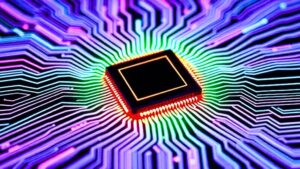A brief introduction:
V8 engines are renowned for their performance and sound. Over the past century, it has evolved through technological advancements and continues to be a popular choice in high-performance automobiles, racing vehicles, and marine applications. In this article, we explore the history, design, and innovations that have made the V8 engine one of the most powerful and efficient engines in the world.
History of the V8 Engine:
Leon Levavasseur developed the first V8 engine in 1902. In Levavasseur’s design, four cylinders were arranged in a V shape with a single crankshaft in the middle. Compared with previous engine designs, the V8 engine produced more power and torque, operated smoothly, and weighed less.
Especially in the United States, the V8 engine gained popularity in a variety of applications, including automobiles, trucks, and airplanes. American muscle cars with large-displacement V8 engines produced incredible horsepower and torque during the 1950s and 1960s.
Design of the V8 Engine:
An eight-cylinder V8 engine has four cylinders on each side of a V-shape, arranged in a V. Usually, the cylinders are arranged at a 90-degree angle, although some manufacturers use 60 or 72-degree angles to improve engine balance.
A cylinder has its own piston, connecting rod, and crankshaft journal. In cylinders, pistons move up and down due to combustion of fuel and air ignited by spark plugs. As the pistons reciprocate, the connecting rods transfer the motion to the crankshaft, which converts it into rotation.
V8 engines have several advantages over other engine designs. The V-shaped engine reduces weight and improves maneuverability by reducing engine length. As a result of its compact size, the V8 engine fits easily into smaller engine compartments, making it ideal for high-performance vehicles and racing.
V8 Engine Innovations:
A number of innovations and improvements have been made to the V8 engine over the years, including fuel injection, turbocharging, and variable valve timing. As a result of these technologies, the performance, efficiency, and emissions of V8 engines have greatly improved.
Direct fuel injection is one of the most significant innovations in the V8 engine. Direct injection improves fuel efficiency and power output by delivering fuel directly into the combustion chamber. By allowing for more precise control over the fuel-air mixture, it also reduces emissions.
Conclusion:
One of the most popular engine designs in the world, the V8 engine has a rich history. In addition to its iconic sound and exceptional performance, innovations in technology continue to improve its power, efficiency, and emissions. Ingenuity and innovation in automotive engineering are evident in the V8 engine, whether it powers sports cars or heavy-duty trucks.






v.jpg)



